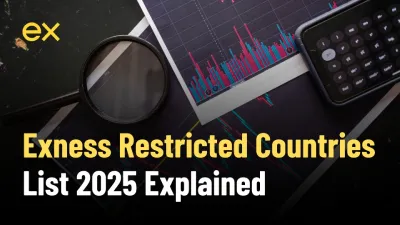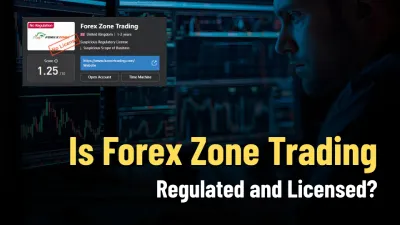简体中文
繁體中文
English
Pусский
日本語
ภาษาไทย
Tiếng Việt
Bahasa Indonesia
Español
हिन्दी
Filippiiniläinen
Français
Deutsch
Português
Türkçe
한국어
العربية
TRADING USD
Abstract:Traders may trade the US dollar (USD) in a variety of methods, including the foreign exchange market (forex) and futures contracts.

Traders on the forex market may purchase or sell the USD against other major currencies such as the euro (EUR), Japanese yen (JPY), and British pound (GBP). The supply and demand for the currency influence the value of the USD, and traders may benefit from variations in the value of the USD by buying low and selling high.
Futures contracts, which are standardized agreements to purchase or sell a certain currency at a specified price on a future date, may also be used to trade the USD. Futures contracts are exchange-traded and enable traders to bet on the direction of the USD or hedge against currency risk.
It is important to understand that trading the USD, or any other currency, has inherent risks, including the danger of losing money. Before trading the USD or any other currency, traders should thoroughly assess their risk tolerance and investment objectives. They should also be aware of the different elements that might influence the US dollar's value, such as economic indicators, geopolitical events, and global economic circumstances.
What is USD Index?
The US Dollar Index (USDX) is a measure of the US dollar's (USD) value in relation to a basket of international currencies. The USDX is used to measure the performance of the US dollar against a basket of currencies thought to be the US's most significant trade partners.
The USDX is calculated by averaging the exchange rates of the US dollar against the following currencies:
Euro (EUR) (EUR)
Japanese yen (JPY)
British pound (GBP)
Canadian dollars (CAD)
Swedish krona (SEK)
Swiss franc (CHF)

The USDX is stated as an index number, with a base value of 100.0 established in March 1973. A number more than 100.0 suggests the USD is stronger than the base value, while a value less than 100.0 implies the USD is weaker.
The USDX is widely used as a benchmark for the strength of the USD by traders and investors, and it is often used to hedge currency risk or speculate on fluctuations in the value of the USD. However, it is crucial to remember that the USDX reflects just a subset of the currencies against which the USD is traded, and it may not correctly reflect the USD's overall strength or weakness in the foreign currency market.
Forecasting USD Value
It's impossible to say if the US dollar (USD) will be in a bullish or negative market. The value of a currency is governed by a variety of variables, including the health of the country's economy, interest rate levels, and inflation levels. These characteristics may alter over time, causing currency value changes. Furthermore, the USD is impacted by global economic circumstances and geopolitical developments, both of which may affect its value.
Traders and investors may use a variety of economic indicators, such as GDP growth, employment statistics, and inflation rates, as well as geopolitical events and global economic circumstances, to assess if the USD is in a bullish or bearish market. However, it is crucial to remember that the value of any currency may change dramatically over short periods of time and that these fluctuations are not always predictable.
Follow us for more Forex News.
Download and install the WikiFX App on your mobile phones from the download link below to stay updated on the latest news, even on the go.
Download link: https://www.wikifx.com/en/download.html

Disclaimer:
The views in this article only represent the author's personal views, and do not constitute investment advice on this platform. This platform does not guarantee the accuracy, completeness and timeliness of the information in the article, and will not be liable for any loss caused by the use of or reliance on the information in the article.
Read more

Is Inzo Broker Safe or a Scam? An Evidence-Based Analysis for Traders
When traders check out a new broker, the main question is always about safety and whether it's real. Is Inzo a trustworthy partner for your trading capital, or is it a scam you should stay away from? The broker looks modern and professional, offering popular platforms and many different account types. However, this polished look is clouded by many serious complaints from users who report big problems with their money and trading conditions. A simple "yes" or "no" answer isn't enough. To reach a good conclusion, we need a detailed investigation based on facts. This analysis will give you a clear and fair breakdown of the facts. We will cut through the mixed information to give you a complete picture of Inzo.

Exness Restricted Countries List 2025 Explained
Exness confirms its restricted countries list for 2025. Learn where Exness is legal, supported regions, and compliance rules for global traders.

Is Uniglobe Markets Legit? A 2025 Simple Guide to Its Safety, Services, and User Warnings
When traders ask, "Is uniglobe markets legit?" They want a clear answer about whether their capital will be safe. This simple guide for 2025 will give you that answer by examining the broker from every important angle. The most important thing we found is that Uniglobe Markets works without proper financial rules and oversight, causing serious risks. This review will carefully examine its legal status, look at confusing company information, explain its trading conditions, and share real user problems. When checking any broker, it's smart to use websites with detailed verification. Traders can find complete profiles and current warnings for thousands of brokers on WikiFX to help with their research. This article will show you the facts, so you can decide smartly based on evidence, not advertising promises.

Is Forex Zone Trading Regulated and Licensed?
Forex Zone Trading is an unregulated broker with no license and an FCA warning, making it a high-risk choice for traders.
WikiFX Broker
Latest News
BASF CEO: EU CO₂ Trading Is A "Destruction Mechanism" For European Industry
WikiEXPO Dubai 2025 “Welcome Party” Kicks Off Tonight!
He Trusted a WhatsApp Group and Lost RM659,000
Is Forex Zone Trading Regulated and Licensed?
PINAKINE Broker India Review 2025: A Complete Guide to Safety and Services
Is Uniglobe Markets Legit? A 2025 Simple Guide to Its Safety, Services, and User Warnings
Capital.com Review 2025: Is It a Scam? Official License Verification and Real User Ratings
BACXN Exchange Exposed: AI-Investment Scam Drains RM1.2 Million
Stonefort Securities Review — MT5 Broker Overview, Regulation, and Trader Experience
From Zero Spread to Zero Balance: How Unlicensed Platforms Drain Investors Step by Step
Currency Calculator




